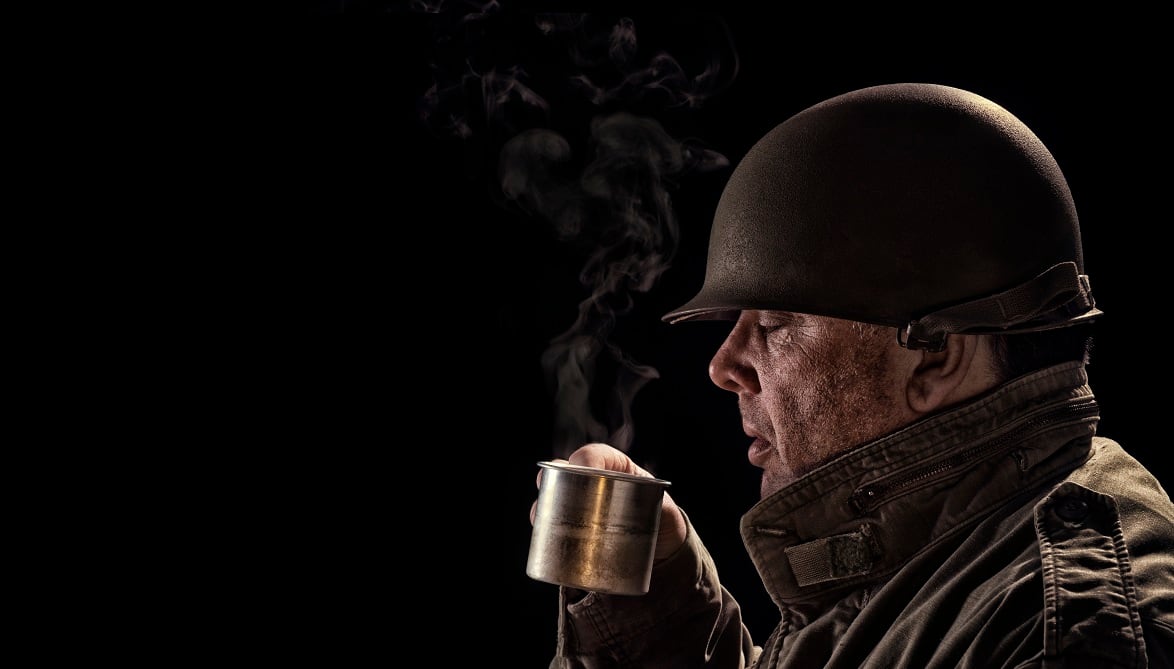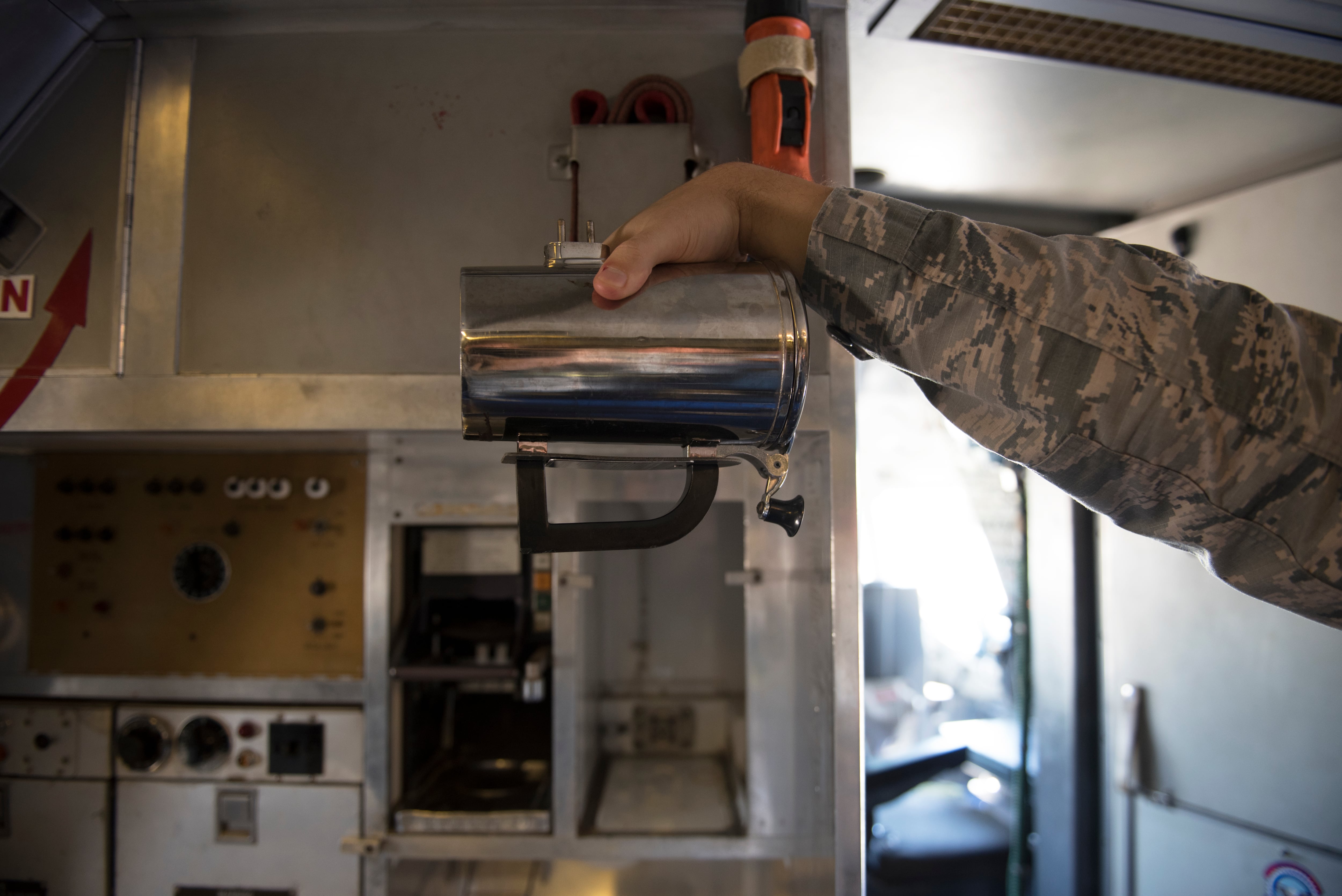The Air Force has temporarily halted purchases of the controversial $1,280 “hot cup” used to warm liquids on cargo and other aircraft amid a growing controversy over their price.
In a Tuesday interview, Air Mobility Command spokesman Col. Chris Karns said that units that try to requisition a new hot cup through the Air Force supply system will receive a message telling them “Do not order until further notice.”
Karns said the Air Force has also asked the Defense Logistics Agency to create a new part number for a 3-D printed replacement handle for the heaters, to make it easier for units to order them when the old handles break.
The Air Force has used the hot cups — which have an internal heating element to warm up liquids such as water, coffee or soup and are specially manufactured to plug into aircraft systems — for decades, since the KC-10 Extender tanker was introduced in 1981.

But their problem lay in a faulty plastic handle that easily broke when dropped. And because replacement handles weren’t available, that meant Air Force units ordered entirely new hot cups. That was expensive enough in 2016, when they cost $693 apiece. But the price tag has now swelled to $1,280 apiece, drawing the ire of Sen. Chuck Grassley, R-Iowa.
The Phoenix Spark innovation program at Travis Air Force Base in California earlier this year began looking for a cheaper way to deal with broken handles, and figured out a way to 3-D print replacement parts for 50 cents apiece. Travis posted a release online July 2 about the 3-D printing solution and said it “could save thousands.”
Others, such as Grassley, didn’t see it that way, and wondered why the Air Force was dropping nearly $1,300 on a coffee cup in the first place. Grassley said in a release Friday that Air Force Secretary Heather Wilson’s answers to him on the subject left him with more questions, and that he would continue to dig into the subject.
Karns acknowledged the price of the hot cups had gotten out of hand, and that Wilson reinforced that the Air Force can’t continue paying it.
“Everyone recognizes that the costs are excessive,” Karns said. “That’s why the change came about. I don’t think you can find a single person who believes what was paid was an acceptable cost.”
RELATED

Karns stressed that airmen at Travis were the ones who highlighted the unacceptable cost of replacing the entire cup, and got to work on finding a better, innovative solution that saved taxpayer dollars.
Karns said the Air Force is exploring other options for heating liquids on aircraft, including trying to find vendors that can provide something similar at a far cheaper price. When asked if the Air Force was looking at items commercial airlines use to heat liquids on their long-duration flights, Karns said, “I don’t think anything’s off the table, other than figuring out how to reduce the cost.”
But the solution isn’t as simple as buying pilots Thermoses for their coffee, he said. The heaters are also used to warm up food such as soup or noodles. Aircraft such as the KC-10 regularly fly lengthy missions of 10 hours or more while deployed, he said, and can sometimes take as long as 17 or 18 hours. This means the air crew need some way to heat up food and beverages in-flight, and a Thermos filled up with coffee before takeoff might not stay warm long enough, he said.
The entire hot cup also can’t be 3-D printed, he said, because it has an internal heating element. And the Air Force has to be careful as it looks for other, potentially cheaper hot cups, because they have to be FAA-certified to maintain flight safety standards on factors such as flammability and heat transferability.
The Air Force Life Cycle Management Center at Wright-Patterson Air Force Base in Ohio has both the printer and the materials that can manufacture air-worthy parts, Karns said, but hopefully soon other locations will also be able to create the handle. A certified 3-D printer is on its way to Travis, he said, and the Air Force hopes to have printers and materials at multiple locations to ease the process of crafting replacement handles.
Stephen Losey is the air warfare reporter for Defense News. He previously covered leadership and personnel issues at Air Force Times, and the Pentagon, special operations and air warfare at Military.com. He has traveled to the Middle East to cover U.S. Air Force operations.









